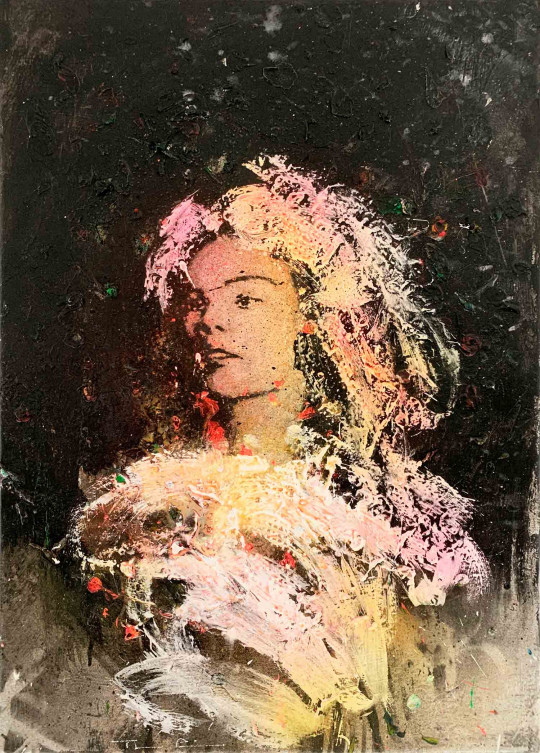The painting of portrait is a pictorial genre, showing a human subject, an imitation of its visual appearance, we speak then of mimesis. Historically, the portrait was reserved to a social class, that of the rich and powerful. Then, portrait spread to all social classes, it is not rare anymore to commission portrait of family or friends. Portraits are considered valuable testimonies of time, as important documents of the State, of families and souvenirs.
The first expressions of portrait paintings were found in the region of Fayoum ( Egypt), naturalistic portraits painted with wax polish in II ° and III ° ad JC. It is from the XIV°s, in paint, that the genre of the portrait shall develop in the aristocratic circles. The commisionners are represented in religious compositions. But really the first autonomous portrait on canvas is Jean le Bon's portrait (cerca 1360, Musée du Louvre in Paris) where he is represented in profile, pose inspired by coins. Thus the portrait sets itself up as an autonomous genre. Afterward, this pictorial genre shall enjoy a large distribution in court, amongst noble persons but is also going to adress the bourgeoisie in Flanders, in Italy, in France … The portrait is going to serve as official representation but also as laic and private testimony. One of the most known portraits is the one painted by Léonardo da Vinci, Mona Lisa - La Joconde (1503-1505/1507, Musée du Louvre), wife of a rich Florentine silk trader, her famous mysterious smile made it one of the most symbolic works of western art history.
Portrait art is going to boom, to be favored in the XVIII°s European art. Portrait is going to meet its golden age, it is no more a simple representation of a subject, the artists integrate the notions of sensibility and intimacy with the multiplication of family and childood. A more psychological approach of the portrait is born. The XIX°s sees the appearance of the photography which allows a faithful representation of the subject, Pictorial genre of the portrait shall be abandoned little by little. Nevertheless, few artists are going to continue it, breaking with naturalistic portrait for a more suggestive representation (Vincent van Gogh, Paul Cézanne and Picasso for example). Finally, from post war till today, with the generalized abandonment of the figurative art, artists experiment increasingly with abstraction to the detriment of portrait painting.
 English
English Français
Français












